Greenhouses are a vital tool for any gardener or plant enthusiast, providing a controlled environment for plants to thrive in. However, with the warm and humid conditions that greenhouses offer, they can also attract unwanted pests such as mites.
These tiny, spider-like insects can quickly infest a greenhouse, causing damage to plants and hindering their growth. Getting rid of mites in a greenhouse can be frustrating and time-consuming, but it is crucial for the health and vitality of your plants.
Here, we will discuss how to get rid of mites in a greenhouse, identify the common types, and, most importantly, how to get rid of them using seven easy ways. We will also provide long-term Integrated Pest Management (IPM) strategies for controlling mites in your greenhouse environment.
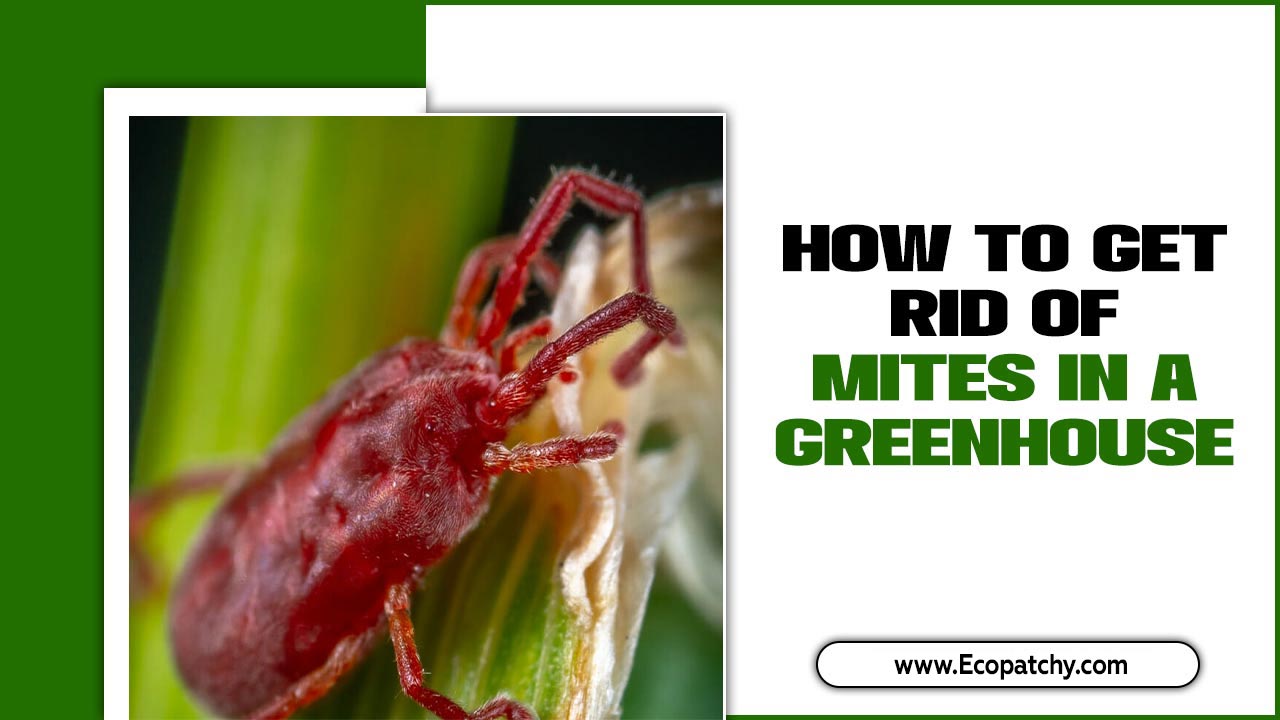
What Are Greenhouse Mites?
Greenhouse mites are common pests that infest plants in controlled environments. They include species like spider mites, cyclamen mites, and broad mites. These mites feed on plant material, causing damage to leaves, flowers, and fruits. To protect your plants and ensure their healthy growth, it’s important to control greenhouse mite infestations.
Identifying Common Types Of Mites In A Greenhouse
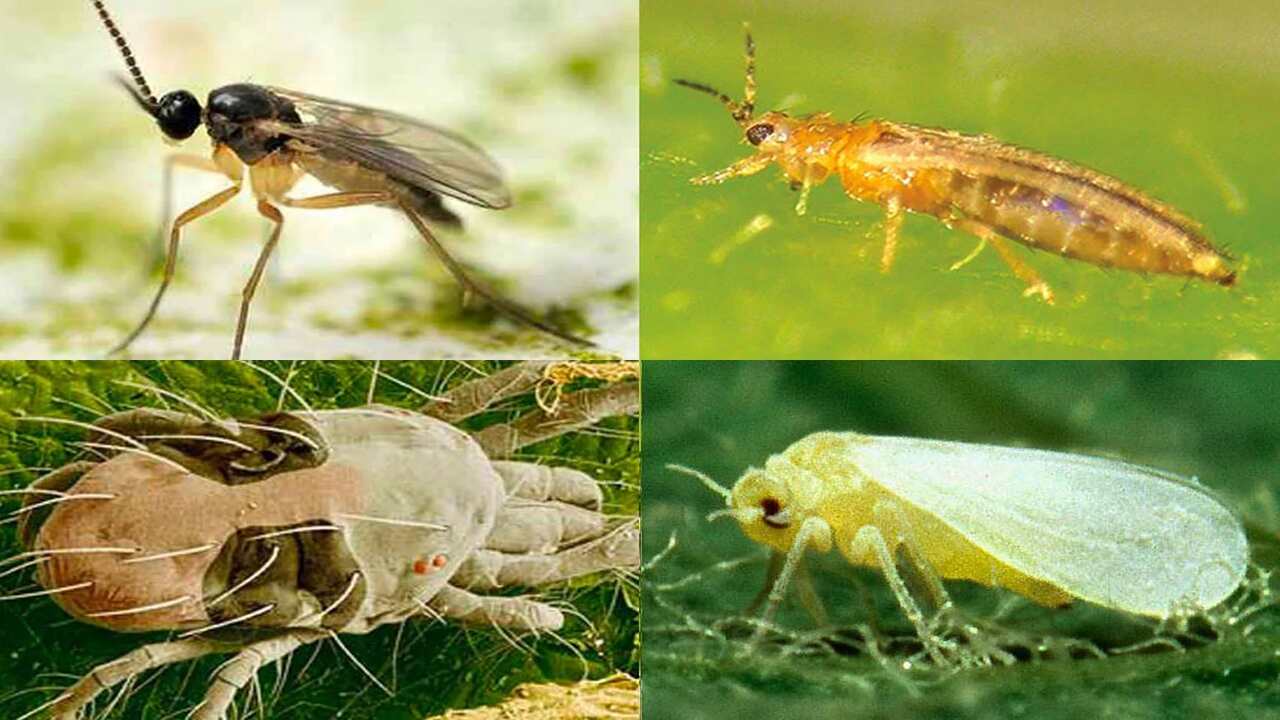
Spider mite infestations in a greenhouse can lead to the appearance of yellow spots, dark spots, webbing, and damage to leaves. On the other hand, a greenhouse affected by cyclamen mites may exhibit deformed leaves, stunted growth, and leaf abscission. Another common mite species is the broad mite, which can cause distorted, twisted, and undersized foliage.
Accurately identifying the type of mite infestation is crucial as it helps select the best control methods. Growers should regularly monitor their plants and intervene early to control mites effectively. Remember that observing the underside of leaves and using a magnifying glass can be a good idea for detecting mites, as they are often small and hard to spot with the naked eye.
How To Get Rid Of Mites In A Greenhouse: 7 Easy Ways
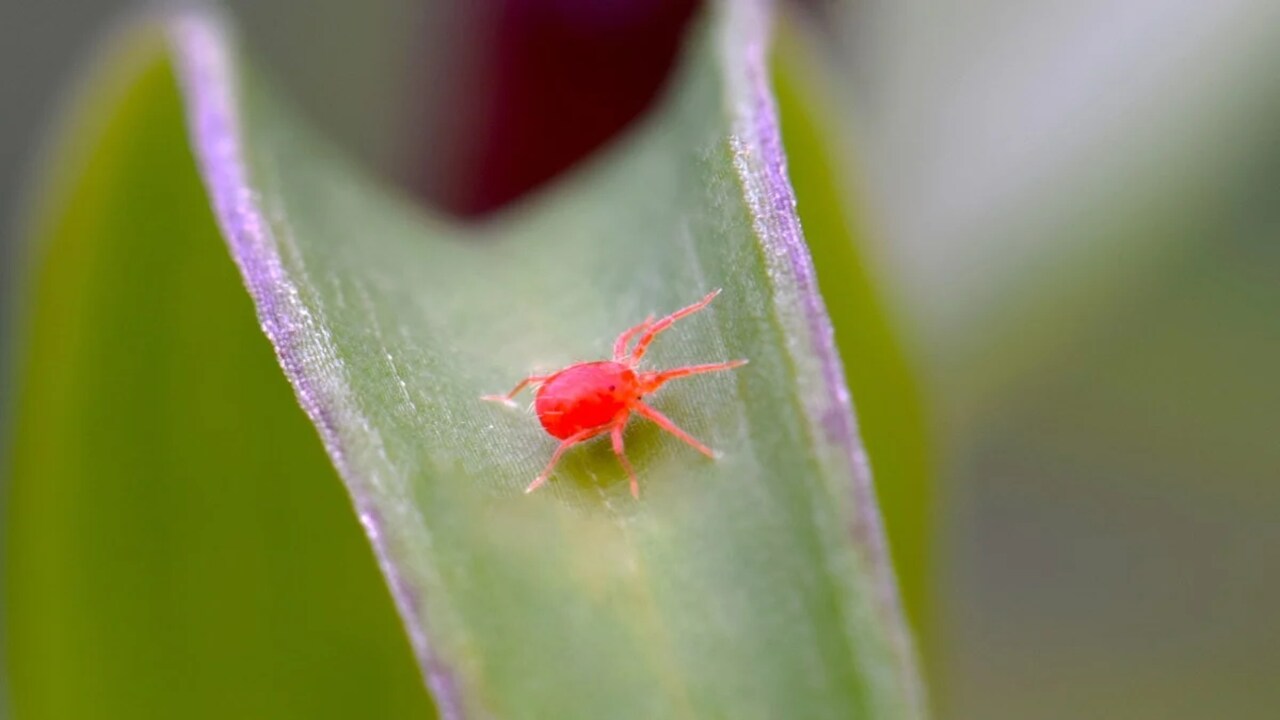
Getting rid of mites in a greenhouse is essential for maintaining healthy plants. These tiny pests can cause significant damage to your plants if left untreated. Luckily, there are several easy ways to eliminate mites from your greenhouse. Mites in a greenhouse can be a common problem for plant enthusiasts.
These tiny arachnids can wreak havoc on plants, causing damage to leaves, stems, and flowers. By following these simple steps, you can effectively eliminate mites in your greenhouse and protect your plants from further damage. Here are seven easy ways how to get rid of mites in a greenhouse:
1.Isolate And Prune Foliage

To effectively eliminate mites in a greenhouse, it is crucial to isolate and prune foliage. By isolating infested plants, you can prevent the spread of mite infestations to healthy plants. Pruning the foliage is another important step, focusing on the undersides of leaves where mites tend to hide.
Removing plant material that has spider mite infestations is a good idea to control the pest population. It’s also essential to monitor plant parts, including the upper leaf surfaces, for any signs of mite infestations. Inspecting plant cells for dark spots, yellow spots, or webbing can indicate mite damage. Following these steps, you can effectively manage and control mite infestations in your greenhouse.
2.Use Natural Oils
Natural oils, such as neem oil, provide an effective solution for combating spider mites in a greenhouse. Neem oil, a natural pesticide, can effectively control spider mite species. When dealing with outdoor plants infested with spider mites, applying neem oil is a good idea.
The great advantage of neem oil is that it does not harm beneficial insects. To target different stages of spider mites, neem oil should be applied to the leaves of the plants, focusing on nymphs, larvae, and adult mites. This application helps disrupt the spider mite life cycle and reduces their population. Using neem oil as a natural miticide is the best option to control spider mites without causing harm to other organisms or the environment.
3.Spray With Water
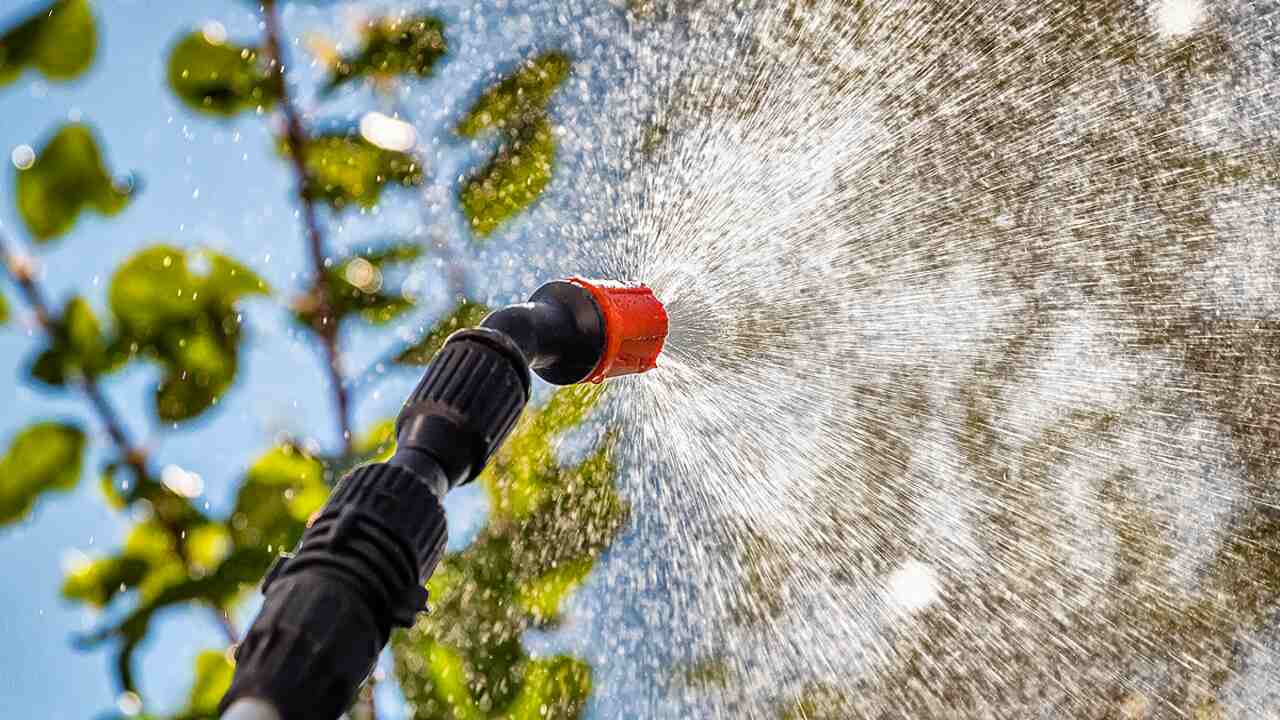
To control spider mite infestations in a greenhouse, spraying water is a good idea. Using a strong stream of water, you can dislodge spider mites from the underside of leaves, where they typically form colonies. This method also helps create water stress, which can reduce mite populations by drying out the conditions they thrive in.
Regularly spraying water on plant leaves will help control spider mite infestations and prevent serious damage. So, if you notice any signs of red spider mites or carmine spider mites on your greenhouse plants, giving them a thorough spray with water is the best option to eliminate these pests.
4.Use A Soap Solution
To control red spider mites in a greenhouse, creating a soap solution is a good idea. By applying this solution to the leaves of your plants, you suffocate and eliminate these pesky pests. The soap solution is a chemical control option that effectively controls spider mite infestations, preventing damage to your precious plant species.
Regularly applying the soap solution is key, as it disrupts the spider mite life cycle, reducing their populations over time. Remember to target the underside of leaves where spider mite colonies tend to form. Using a soap solution is one of the best options for managing spider mites in a greenhouse setting.
5.Introduce Beneficial Insects
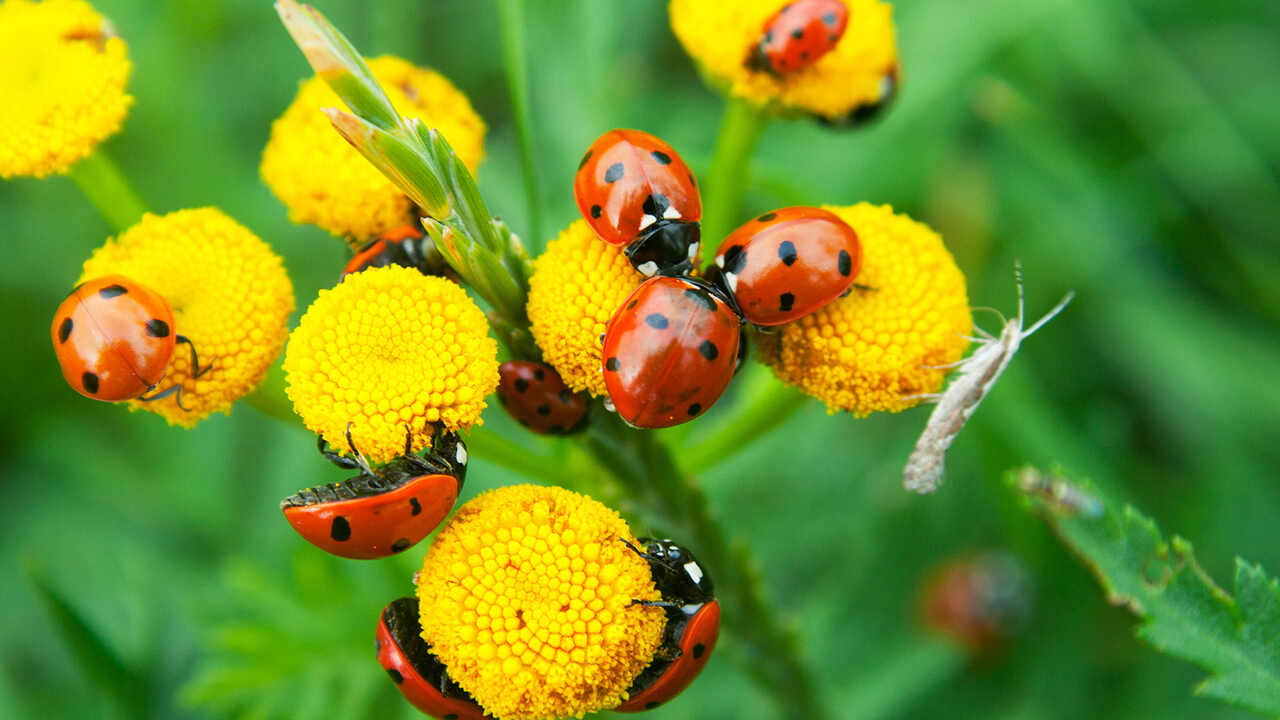
Introducing beneficial insects, such as predatory mites, can be highly effective in controlling spider mite infestations in a greenhouse. One of the best options is to use predatory mites like Phytoseiulus persimilis, which specifically feeds on spider mite eggs and nymphs.
Another beneficial insect that can be released is tetranychus urticae, known to control spider mite pest populations. These beneficial insects are natural enemies of spider mites and can greatly improve spider mite control, reducing the need for pesticides. By introducing these helpful allies, growers can keep spider mite populations in check and minimize using miticides or other chemical control methods.
6.Create Undesirable Conditions
To discourage spider mite infestations in a greenhouse, it is essential to manipulate the environmental conditions. Adjusting the relative humidity and increasing ventilation can create undesirable conditions for these pests. By maintaining appropriate humidity levels, you can prevent water stress and deter spider mites.
Manipulating greenhouse humidity, temperature, and ventilation can further discourage their presence. Creating dry conditions and avoiding water stress are good ideas for reducing spider mite populations.
Additionally, high temperatures can create an inhospitable environment for spider mites in the greenhouse. By creating these undesirable conditions, growers can effectively control spider mite infestations without relying solely on miticides or chemical treatments.
7.Repeat And Prevent
To effectively manage spider mite infestations in a greenhouse, it is important to repeat mite control methods regularly. This ensures that any remaining mites are eliminated and prevents further outbreaks. Continuously monitoring plants for spider mite infestations is crucial, as early detection allows for timely intervention.
By repeating control measures as needed, you can effectively manage and reduce the population of these pests. Prevention is key to mites, so it’s a good idea to implement mite control strategies, such as introducing beneficial insects, before infestations occur.
Regularly inspecting plants, especially houseplants, for spider mite infestations is also important in preventing serious damage. IPM (Integrated pest management) strategies are vital in controlling and preventing future mite infestations.
Integrated Pest Management (Ipm) Strategies For Long-Term Mite Control

Integrated Pest Management (IPM) strategies are an effective approach for long-term mite control in greenhouses. These strategies focus on preventing mite infestations and minimizing the use of chemical pesticides. Here are some IPM strategies to help you get rid of mites in your greenhouse:
- Monitor Regularly: Inspect your plants for signs of mite infestation, such as yellowing leaves, webbing, or small moving specks. Early detection is crucial for effective control.
- Maintain Cleanliness: Keep your greenhouse clean and debris-free, as mites can hide and reproduce in plant debris. Regularly remove fallen leaves and weeds to eliminate potential breeding grounds.
- Increase Humidity: Mites thrive in dry conditions, so increasing humidity levels in the greenhouse can help deter them. Mist your plants with water or use a humidifier to maintain optimal humidity.
- Introduce Beneficial Insects: Certain predatory insects, such as ladybugs and predatory mites, feed on mites and can help control their population naturally. Consider introducing these beneficial insects into your greenhouse as part of your IPM strategy.
- Use Organic Pesticides Sparingly: If mite populations become unmanageable, consider using organic pesticides specifically targeting mites. However, it is important to use these products sparingly and follow the instructions carefully to minimize harm to beneficial insects and the environment.
By implementing these IPM strategies, you can effectively control mite populations in your greenhouse while minimizing the use of chemical pesticides.
Helpful Tips For Maintaining A Mite-Free Greenhouse Environment

Maintaining a mite-free environment in your greenhouse is essential for the health and success of your plants. By following these tips and staying vigilant, you can create a mite-free environment in your greenhouse and ensure healthy plant growth. Here are some helpful tips to help you get rid of mites and prevent them from infesting your greenhouse:
- Regularly Inspect Your Plants: Take the time to closely examine your plants for any signs of mite infestation, such as tiny webs or discoloration on the leaves. Early detection is key to preventing the spread of mites.
- Remove Affected Plants: If you spot any plants that are heavily infested with mites, it’s best to remove them from the greenhouse immediately. This will help prevent the mites from spreading to other healthy plants.
- Increase Air Circulation: Mites thrive in warm and humid environments, so increasing air circulation in your greenhouse can help deter them. Use fans or open vents to keep the air moving and reduce humidity.
- Keep The Greenhouse Clean: Regularly clean all surfaces in your greenhouse, including benches, pots, and tools. Mites can hide in debris and plant material, so removing any potential hiding spots will make it harder for them to survive.
- Introduce Beneficial Insects: Consider introducing predatory insects, such as ladybugs or predatory mites, into your greenhouse. These natural predators feed on mites and can help keep their population under control.
- Use Organic Pest Control Methods: If chemical treatments are necessary, opt for organic or natural options that are safe for your plants and the environment. Neem oil or insecticidal soap can be effective against mites without causing harm to beneficial insects.
Regular Inspection And Isolation Of New Plants
Inspecting new plants for mite infestations before introducing them to the greenhouse is essential. This helps prevent the spread of mites and ensures the overall health of your greenhouse. Isolating new plants for some time is also a good idea to avoid any potential mite infestations from spreading to other plants.
Implementing a regular inspection routine is crucial in catching mite infestations early. A simple method to check for mites falling from plants is by using a white sheet of paper underneath the plants. Monitor the undersides of leaves, upper leaf surfaces, and plant cells for any signs of mite damage. By following these practices, you can effectively manage mite infestations in your greenhouse.
Conclusion
Preventing and eliminating mites in a greenhouse requires a combination of proactive measures and consistent maintenance. By identifying the common types of mites, isolating affected plants, and using natural remedies such as oils and soap solutions, you can effectively control their population.
Additionally, introducing beneficial insects and creating undesirable conditions for mites can further deter their presence. Integrated Pest Management (IPM) strategies provide long-term control, while regular inspection and isolation of new plants help prevent re-infestation.
Remember, maintaining a mite-free greenhouse environment necessitates diligence and ongoing care. By implementing these easy ways and following helpful tips, you can ensure a healthy and thriving greenhouse environment for your plants. We hope you know how to get rid of mites in a greenhouse.
Frequently Asked Questions
1.What Causes Mites To Infest A Greenhouse?
Ans: Mites infest greenhouses due to high humidity, warm temperatures, and poor air circulation. Overwatering and introducing infected plants or contaminated soil can also contribute to mite infestations. Regular cleaning and maintenance practices can help prevent these pests from taking over your greenhouse.
2.Can Plants With Mites Be Saved?
Ans: Plants infested with mites can be saved through proper treatment. It is important to isolate the infested plants to prevent mites from spreading to other plants. Treating them with insecticidal soap or neem oil can help control the infestation.
3.How Do You Kill Mites Organically?
Ans: Organically killing mites in a greenhouse can be achieved through various methods. Neem oil, a popular choice, effectively eliminates mite infestations. Predatory mites can also be introduced to control the population naturally. A mixture of water and soap suffocates the pests without harming plants.
4.How Do Mites Get Into Your Greenhouse?
Ans: Mites can find their way into your greenhouse through infested plants or soil. They can also hitch a ride on clothing, tools, or pets. Inadequate ventilation and high humidity levels create the perfect conditions for mites to thrive.
5.What Are Some Natural Methods To Get Rid Of Mites In A Greenhouse?
Ans: Neem oil, a natural and effective solution, can help eliminate mites in greenhouses. Introducing predatory mites like Phytoseiulus persimilis can also control the pest populations. Another option is to spray water and soap to combat mite infestations.
